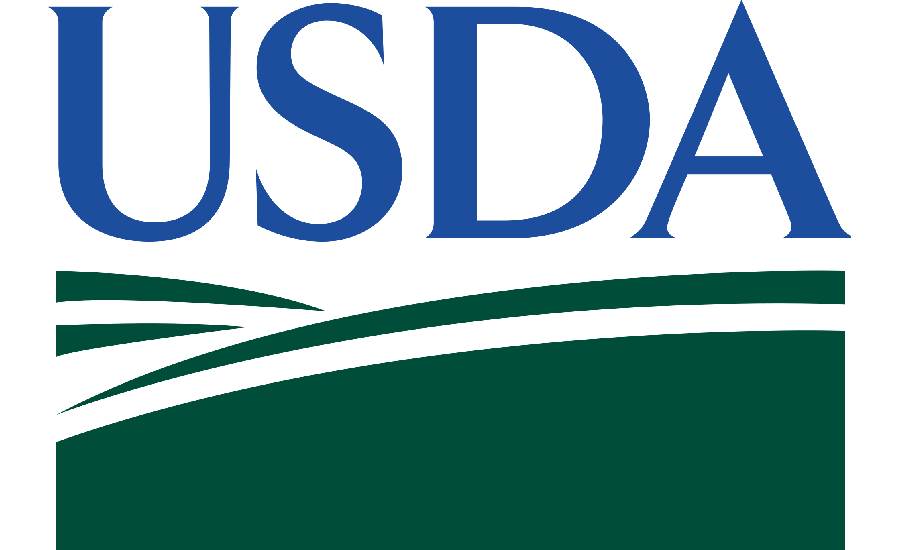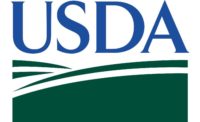USDA announces investments to strengthen food supply chain, solidify commitment to helping meat and poultry industry

U.S. Department of Agriculture (USDA) Secretary Tom Vilsack has announced the investment of $32 million in grants awarded to 167 meat and poultry slaughter and processing facilities to support expanded capacity and efficiency through the Meat and Poultry Inspection Readiness Grant (MPIRG) program.
“Today’s investment supports local and regional meat and poultry processors as they recover from the pandemic and also work to expand capacity,” Vilsack said. “Achieving a Federal Grant of Inspection or operating under a Cooperative Interstate Shipment program allows meat and poultry processors to ship products across state lines, pursue new market opportunities, and better meet consumer and producer demand along the supply chain.”
With this grant funding, meat and poultry processing businesses can cover the costs for improvements such as expanding existing facilities, modernizing processing equipment and meeting packaging, labeling, and food safety requirements needed to achieve a Federal Grant of Inspection under the Federal Meat Inspection Act or the Poultry Products Inspection Act, or to operate under a state’s Cooperative Interstate Shipment program. These changes will allow these facilities to serve more customers in more markets.
MPIRG, a new program authorized by the Consolidated Appropriations Act of 2021, is jointly administered by USDA’s Agricultural Marketing Service (AMS) and Food Safety and Inspection Service (FSIS). The program was part of USDA’s comprehensive funding package to help small and very small processing facilities weather the pandemic, compete in the marketplace, and get the support they need to reach more customers.
In June 2021, USDA announced the availability of $55.2 million in MPIRG funding, accepting applications for a competitive grant award process which resulted in the awards. Remaining funds will be made available through a forthcoming Request for Applications.
To learn more about MPIRG and see the list of awards, visit www.ams.usda.gov/mpirg.
In addition, the U.S. Department of Agriculture (USDA) announced a $90.2 million investment in 203 projects to strengthen and explore new market opportunities for local and regional food businesses. The funding is made possible through grant programs administered by the Agricultural Marketing Service (AMS) as part of the Local Agriculture Marketing Program (LAMP): the Farmers Market and Local Food Promotion Programs (FMLFPP) and the Regional Food System Partnerships (RFSP).
- FMLFPP awarded a total of $75.4 million to 172 projects across 41 states to support the development, coordination, and expansion of direct producer to consumer markets and local and regional food business enterprises. FMLFPP is implemented through two components, the Farmers Market Promotion Program (FMPP) and the Local Food Promotion Program (LFPP). FMPP awarded $37.5 million to 84 projects to support direct producer-to-consumer marketing projects such as farmers markets, community-supported agriculture programs, roadside stands, and agritourism. LFPP awarded $37.7 million to 85 projects to develop, improve, and expand local and regional food business intermediary supply chain activities, including processing, distribution, aggregation, and storage of locally or regionally produced food products.
- RFSP awarded $14.8 million to 30 projects across 24 states to support partnerships that connect public and private resources to plan and develop local or regional food systems. The projects focus on strengthening the viability and resilience of regional food economies through collaboration and coordination.
“These grants will help maximize opportunities for economic growth and ingenuity in local and regional food systems to kickstart this transformation. The Local Agriculture Marketing Program grants have a history of generating new income sources for small, beginning, veteran and socially disadvantaged farmers and creating new market opportunities for value-added and niche products,” said Agriculture Secretary Tom Vilsack “The new Regional Food System Partnerships grants will help build a fairer, more transparent food system rooted in local and regional production where businesses can compete fairly, because a greater share of the profit will go to those growing, harvesting, and preparing our food.”
“The strength of America’s agricultural economy is our creativity and resilience. Whether it’s a farmers market in Lansing or a food business in Kalamazoo, local and regional food systems expand economic opportunities for farmers and secure healthy food supply chains for families,” said Senator Debbie Stabenow, chairwoman of the Senate Committee on Agriculture, Nutrition and Forestry.
LAMP recipients include:
- A Kentucky-based project that will help strengthen and stabilize participating farmers markets by creating marketing space, adapting a training program, and developing a peer-to-peer learning network. The project will strengthen Kentucky’s local and regional food system infrastructure and increased vendor sales and on-farm revenue.
- The Western Treasure Valley Food Systems Partnership project, focusing on the Western Treasure Valley region that spans southeastern Oregon and western Idaho, will develop a food hub and shared use kitchen feasibility study and business plan to increase regional capacity for processing, food distribution and storage, small to mid-scale value chain market development, coordination and delivery of nutrition education, and food access solutions.
AMS supports U.S. food and agricultural products market opportunities, while increasing consumer access to fresh, healthy foods through applied research, technical services, and Congressionally funded grants. These projects will support the development, coordination and expansion of direct producer-to-consumer marketing, local and regional food markets and enterprises, and value-added agricultural products.
“Small and medium-size farmers, ranchers and processors have an important role in strengthening our food supply chain. These USDA local and regional food grants will help these agricultural businesses build, expand, and sustain the processing, distribution and storage systems that will help move food from the farm to the table,” said USDA Under Secretary for Marketing and Regulatory Programs Jenny Lester Moffitt.
LAMP was established in the Agricultural Improvement Act of 2018 (Farm Bill) (Pub. L. No. 115—334) and received a supplemental appropriation through the Consolidated Appropriations Act of 2021 (Pub. L. No. 116—260).
For a list of grant recipients and to learn more about AMS’ investments in enhancing and strengthening agricultural systems, visit www.ams.usda.gov/grants.
Source: USDA
Looking for a reprint of this article?
From high-res PDFs to custom plaques, order your copy today!




